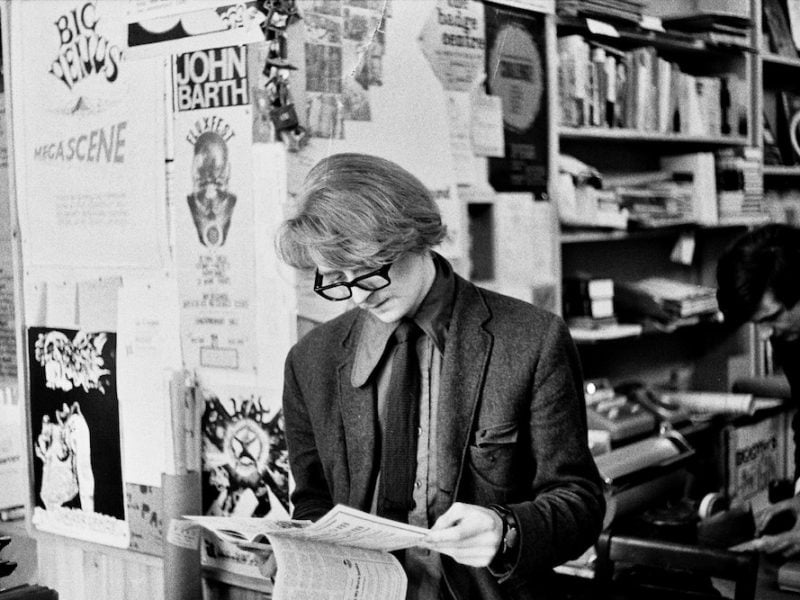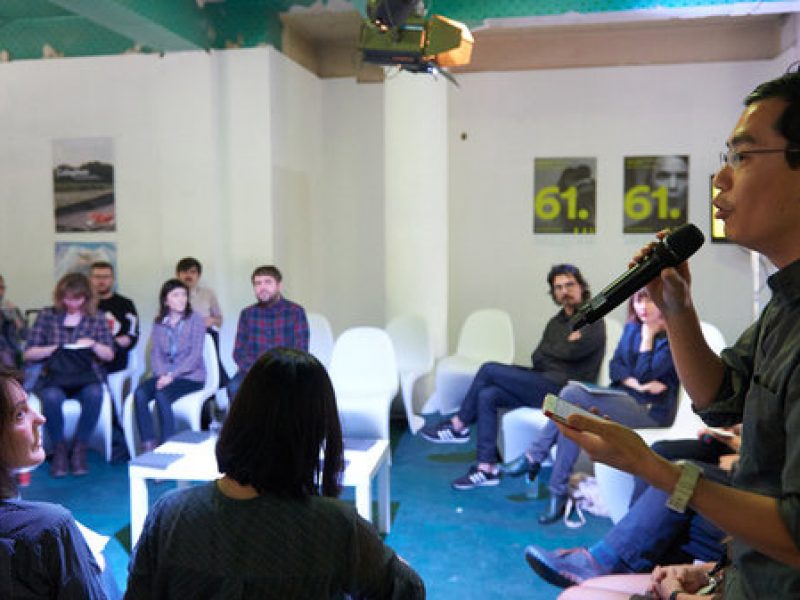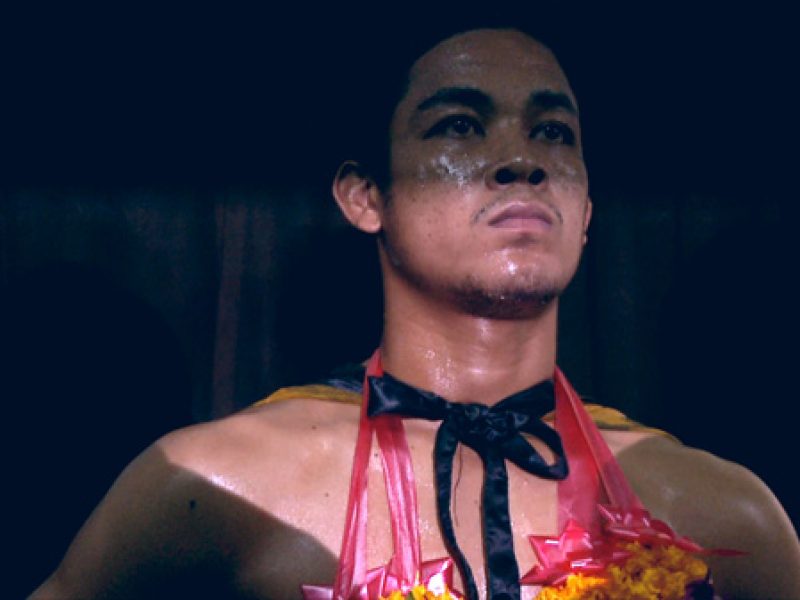My first experience of the festival – this must have been 1975 – was smoky and dark – because everything was projected from film. Projector beams through smoke – everything in black and white– and it was very grainy. It was a beatnik world – darkness and underground films which could be subversive – so there was a real feeling you could be doing something avant-garde which nobody else was doing anywhere in the world –not in New York, or San Francisco or Los Angeles. RC
Ann Arbor is a small University town 43 miles west of Detroit, in the state of Michigan, USA. In the last week of March every year, the town hosts the eponymous Film Festival; six days of screenings of artists’ moving image at the Michigan Theatre on E Liberty St.
The Ann Arbor Film Festival began in 1963 – and is the most longstanding screening event for artists’ film. It bore witness to the seminal period in artists’ engagement with the medium in the 1960s and was a meeting point for key practitioners: Andy Warhol, Kenneth Anger and Yoko Ono all screened work in Ann Arbor. The abstract, lyrical, structural and documentative genres of artists’ film remain touchstones for contemporary single screen practice in the US and were strongly represented in the programme at Ann Arbor this year.
Yet what is the cultural place of artist film festivals in 2011? In place of the festival, the gallery offers makers a critical context and well developed economic models and structures. Online, an audience can curate their own programmes. Do makers and audience benefit from meeting at the same place to see films?
Aspects of the Ann Arbor Film Festival address these issues and others concerning the social context of an art practice. Certainly all festivals create the conditions for a special encounter with work – the dynamic of entering a dark room to see a program of ‘unseen’ new films is a powerful one. Overall, festivals can offer a snapshot of current practice and situate the work in context. They can facilitate the meeting of makers and audience and this is a particular strength of Ann Arbor. For despite the oft-cited ‘difficulty’ and ‘demanding’ nature of this practice, this festival has substantial community involvement and investment in terms of the time and energy of an enthusiastic cadre of local volunteers.
I’ve been programming experimental films for over 40 years and the Ann Arbor Film Festival was a unique event in my experience. I have never encountered a community that was so involved and integrated with the Avant-garde film movement and artists. You truly have something extraordinary happening in Ann Arbor.
DY
In the past few years, nurturing a local audience has been one of the key strategies of the current Executive Director, Donald Harrison:
My approach to the Festival is about inviting the community to come in and participate. For me it’s a philosophical approach; everybody should come to this – not necessarily expect to like everything – but to come anyway and experience what they experience and talk about it with each other.
DH
It is so hard to start up (a festival) without a pedigree. You have to spend time building the brand up and nationally the Ann Arbor brand has really taken off. I think people think of this is a quintessential home-grown place for independent cinema.
RT
The resilience of the support for festival was severely tested for a period beginning in 2005. Key staff turned over and the festival underwent a period of artistic uncertainty. Despite the festival lifting a celluloid-only policy in 2003, a general dearth of funding for artists film production played a big part in a sharp fall in submitted work of all kinds.
When I came to the Festival (2006) it was facing many challenges and in jeopardy of shutting its doors. I quickly became immersed in the community and jumped into their efforts. I loved the fact that they were showing such challenging, artist-made work.
DH
…..there were a lot of people in town who didn’t want to see it go the way of past cultural events. There was a big Blues and Jazz festival in Ann Arbor– world famous musicians came here – and that died and went away. There have been some great clubs and bars that had great music but they essentially died and went away. But there was enough love and enough energy left and enough people saying – we don’t want the AAFF to go that way. We want it to survive, we want it to be sustainable…..
RC
These changes had not been unnoticed in the local community. A major fundraising drive was undertaken in 2006, led by staff, volunteers and a re-vitalised Board of Directors. Financial stability and sustainability of the festival was prioritized, securing its’ long-term future.
Why become a member of the board? One thing was that I had the time, and I wanted to help ensure the festival would last. I am one of those people you can depend on to get things done, do things – I am a worker bee – and I thought that I could help the Board and push people and bring other people in that I knew in the community to help donate to the festival professionally and artistically.
MJR
These moves have produced tangible results. Gradually the festival has been able to hire more permanent staff and the 2011/49th edition was created by a renewed organisation:
we have four paid staff. Everybody is under 40. It makes a difference having a paid staff because to have a successful film festival as we do and have it progress: we have to have a professional staff and work on it year-round.
MJR
A wide range of funding streams support the festival as a non-profit. Less than 20% of the operating budget is government sourced from the National Endowment for the Arts and the Michigan Council for Arts and Cultural Affairs. Arts organisations such as the Motion Picture Academy of Arts and Sciences and the Warhol Foundation have provided significant project grants yet the majority of funding and sponsorship occurs privately – from individuals and local businesses. The festival has avoided significant corporate sponsorships, circumventing the agendas associated with large donors and the perception of ‘selling out’, a concern in the community:
You have to keep your distance from institutions. Be it political, cultural social – they all have their own agenda – just as the film fest has it’s own agenda and sometimes it does not match everybody else’s agenda. And that is how you keep yourself from being seen to sell out. We had Kenneth Anger last year – he has become a pretty mainstream guy… but none the less he is important to the festival due to the history.
RC
I think a lot of people also believe this is the only true independent festival in the country. That has to do with it not bowing to the industry; the indie industry or the talk industry, in a particular way that keeps the mark of experimental on all of the media forms that are involved in it.
RT
The appeal of the festival for the community ranges beyond the film screenings.
There are two things happening – the artistic stuff ….. and the event – and that brings local people in. They want to be in the Michigan Theatre, they want to see their friends, they want to be part of something – this is what ties it to the community.
RC
The community is present as audience but also as volunteers, undertaking much of the hospitality duties of the event. The welcome extended to festival visitors in Ann Arbor, from people committing time and enthusiasm without pay, is exceptionally open and helpful.
I’m an intern – I do whatever needs to be done! For example – yesterday I had the fun opportunity of getting everything organised for (some visitors). The filmmakers were to stay with new hosts and I was told – Caitlin; you have to go to this house and make the beds for the visitors. I will do that – that’s fine. You are not going to have someone visiting and showing their work and not have a place set up for them to stay. My job was never specified as ‘you are in charge of this’…..
CD
We put calls for volunteers in our newsletters starting in January. We give them tickets for screenings – if they can only help out for three hours (they) get a couple of passes to see a screening. The more they help, the more they get. So if they help out for 15 hours they get a full festival pass.
I look for somebody who has got enthusiasm for the festival – somebody who wants to help out – (and do) whatever it takes to make the festival run. We really could not do the festival without the volunteers. We have 70 people who are here without pay just helping out.
KMcM
I honestly think that working for the festival has been one of the most positive (experiences) and will help me most. I would love to work in the arts – not as an artist – but I love working with creative people and pushing their ideas out.
CD
An Ann Arbor tradition is also to house visiting filmmakers, scholars and programmers during the festival. This is a very popular option for both parties – with many staying with the same hosts on each visit.
George Manupelli, principal founder of the festival and for many years the director, had an inclusive stance towards submissions:
George encouraged anything by anybody – a filmmaker – anybody could make a film, video or moving image, submit it, have it looked at by screeners, programmers and possibly get it on the screen in the programme. And maybe even win a prize – everybody has that same shot.
RC
Now submissions to the festival are previewed at least three times by voluntary pre-screeners with differing perspectives and expertise. Filmmakers and academics with an interest in film also take part, in a process that has continually evolved to keep up with the overall growth of the festival in the past decade.
I’m on the pre-screener committee. We receive the films on DVD, (and we) rate the films with good and bad comments. Pre-screeners get 40 films at a time to view – the films can be 2 minutes to 2 hours long – we’ve got to view (the 40) within 2 weeks.
I do marathon sessions – usually I want to jump into it – because there are so many shorts it’s usually pretty easy to do it. I preview narratives. That’s a genre most people do not want to do – most want to preview experimental cinema. I do the narratives because I like stories – I tried doing animations and realised I liked too many of them.
MJR
Naturally the festival is embedded and responsive to the global community of artist working with media. Crafting the festival program is the responsibility of Program Director David Dinnell:
The programming process can be complex and has many facets. Yet since the festival began, there has always been a part of the process where people sit in a room together, view works, and have a discussion. The seriousness with which the screeners approach this task of viewing the work generates energetic conversations about the films being considered.
DD
Notwithstanding this complexity, and fostered by other points of contact as hosts and audience, the local community has a stake in the festival programme. The results are palpable; visiting filmmaker Robert Todd believes the audience at Ann Arbor contributes to a special screening atmosphere:
(the festival) gets massive audiences so the conversations you are going to have are more likely to be with people who are really just interested in film. Like last night; hearing people sat behind me who are talking about the films in between the screenings. They are debating – young people but not cinema students – and they have a lot of opinions and they are sophisticated viewers of film.
RT
I think that people who don’t have experience of experimental film need to start somewhere and that is an important role of the festival. We are reaching a lot of people who don’t normally go to an experimental film festival. Many times they open up and catch a film they would never have seen before and it has a profound effect on them. For the filmmakers, especially the ones in attendance, it often takes them aback to see so many open-minded, curious audience members engage with their work.
DH
So as a filmmaker you are floating over all of other people’s joy let’s say. And that is just an ebullient thing for your own work.. So formally, seeing your work in a large theatre with good sound, great projection and the feeling that this is such an amazing communal experience with so many people there- with that quality being experienced by them too; it feels like the whole process that you’ve been involved is justified.
RT
The Ann Arbor Film Festival will celebrate its 50th edition in 2012, with many special events planned. Donald Harrison’s vision for the coming years is to deepen the appeal of the festival for the community of artists, curators and writers who collectively shape the discourse around artist film.
The future of the Festival? I think that we have not quite hit a critical mass yet, where art and film enthusiasts around the U.S. regard this as one of the premier opportunities to experience moving image art on the screen. For one week, artists, filmmakers, programmers and scholars, people who are knowledgeable or very appreciative or both, are in this one place. It’s a celebration, it’s rewarding and it’s a lot of fun! The Festival is very social and welcoming and there is not that sense of exclusivity that you might find at a lot of similar events. We very much value the collective, big screen viewing experience. Ultimately what we’re working toward is having a lot of people seeing great artist-made films and having our audience share great experiences. DH
RC – Rick Cronn, Ann Arbor
DD – David Dinnell, Program Director, Ann Arbor Film Festival
CD – Caitlin Dronen, Intern, Ann Arbor Film Festival
DH – Donald Harrison, Executive Director, Ann Arbor Film Festival
KMcM – Katie MacMahan, Volunteer Co-ordinator, Ann Arbor Film Festival
MJR – Myrna Jean Rugg, Secretary, Board of Directors, Ann
Arbor Film Festival
RT – Robert Todd, Filmmaker, Boston MA
DY – Don Yannacito, Professor of Film Studies, University of Colorado, Boulder
Stephen Connolly







